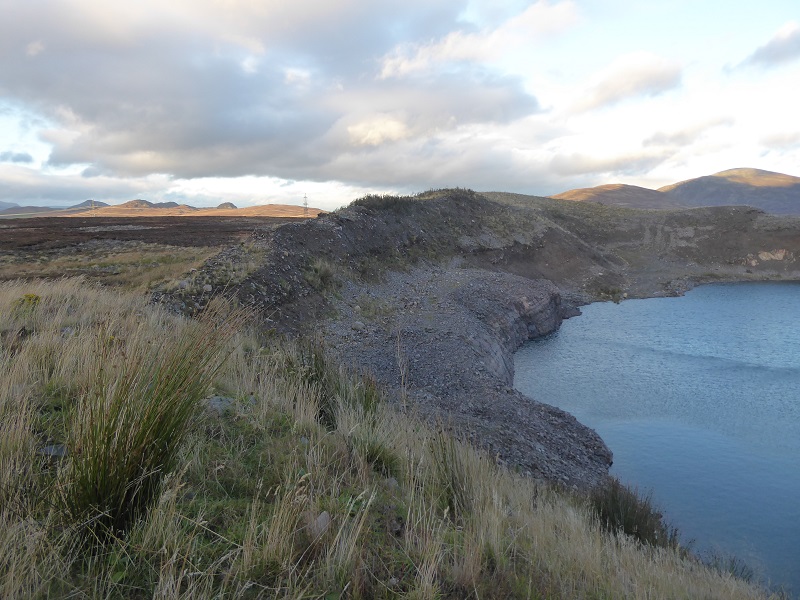
Mining and quarrying have formed two of the greatest challenges faced by National Parks in England Wales. This is because the upland areas there are rich in minerals and provide rock good for housebuilding and because most of the National Parks are situated in close to large urban conurbations. Our two National Parks in Scotland are rather different, one being formed mostly out of mica schist – a challenging building material! – and the other being remote from large urban conurbations.
Many of the mining and quarrying rights in places such as the Peak District National Park pre-dated the modern planning system and it has taken almost forty years to bring them under full planning control. The general presumption in England and Wales now is that any new quarries should be small scale to allow the refurbishment of the buildings which give the settlements in these National Parks so much of their character. The Loch Lomond and Trossachs National Park Authority adopted broadly similar policies towards mining and quarrying as their southern counterparts but without having to address any of the legacy issues as most of the old quarries, such as at Luss and Aberfoyle, were no longer functional. When put to the test, however, at Cononish (see here) earlier this year the LLTNPA again ignored its own policies. Now, the Cairngorms National Park Authority faces a similar challenge at Dalwhinnie with a proposal to re-start and extend the quarry there (see here). This post takes a look at the issues.
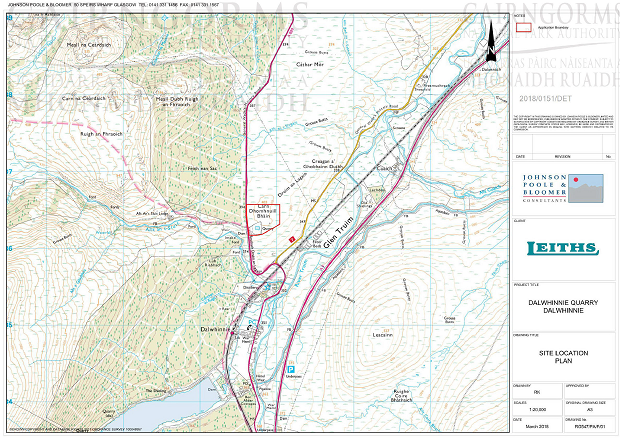
The quarry proposal and the Cairngorms National Park
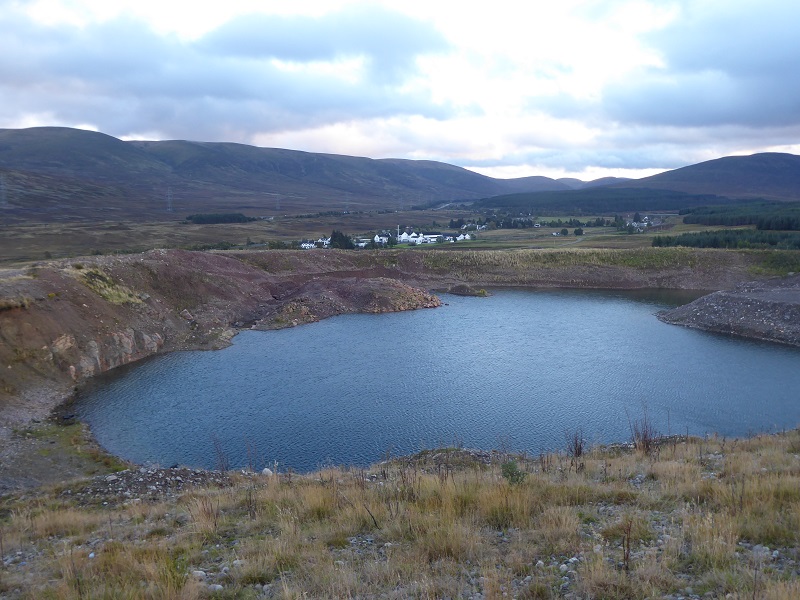
If our National Parks are to mean anything, they need to protect the landscape from large scale modification by humans and that should include digging large holes in them (or dumping 530,000 tonnes of mine waste as agreed by the LLTNPA at Cononish). The current CNPA Local Development Plan, while lacking detailed policies on mining and quarrying, takes a strong stand on resources:
11 Resources
What the policy aims to do
11.1 Reducing our consumption and protecting our limited resources is integral to conserving what is important about the Park, and helping our communities adapt to a lower carbon way of living. This stretches from the need to protect the resources that exist, to facilitating development in a way that minimises any negative impacts and promotes positive improvement to the environment,……………………….
11.2 The resources that exist are, in many cases, a result of millions of years of geological activity and their protection is important not only because of their finite nature, but also the role they play in helping to create the landscapes we value today…………………
11.3 The policy aims to reduce the overall resource use footprint of the National Park, protect resources where appropriate and ensure we use and manage natural resources in an effective way. It will protect what is important about our resources, while facilitating appropriate development in ways which create a net positive outcome. …………..
The problem the CNPA faces at Dalwhinnie, however, is that the proposal from Leiths to extend the quarry is partly in response to the A9 dualling project. This requires hundreds of thousands of tonnes of aggregrate. Given the A9 decision – and I think the Scottish Government should have upgraded the railway before the road – there needs to needs to be a hole somewhere. The further away the hole is from the A9, the more the environmental impact and the cost, if the aggregate is transported by lorry. A creative solution might have been to transport all the waste that the LLTNPA has agreed to dump at Cononish round to the Drumochter in electric powered trains but with our current (unsustainable) infrastructure that at present is just a fanciful idea.
In the long term though we need a Government strategy that addresses the issue of materials being dumped in one place, while it sponsors developments that require holes to be dug in another and for how long we can continue to extract rocks and minerals at current rates.
Given these circumstances outwith its control, the CNPA has no choice but to breach section c of its supplementary guidance (non-statutory) on minerals:
Development to exploit mineral reserves will only be considered favourably where:
a) the developer can demonstrate the market within the Cairngorms National Park where the mineral will be used to provide other social or economic benefit and
b) there are no adverse environmental impacts; and
c) the material furthers conservation or restoration of the distinctive landscape character and built environment of the Park; and
d) full restoration details are incorporated as part of the proposal; and
e) no suitable and reasonable alternatives to the material are available.
The dualling of the A9, however well designed, will not further the conservation or the distinctive landscape of the National Park. I believe therefore, in deciding this case, the CNPA should consider what is the most sustainable and feasible way at present to source aggregate for the A9 within the context of its other policies. If there is source of aggregate outwith the National Park – or even within it – which will have less impact, the CNPA should reject the application.
If not, Leiths are asking for planning permission for the quarry to operate for 35 years, long after the A9 will have been completed. Their application is clearly not just about sourcing aggregate for the A9 and appears built on the assumption that current unsustainable levels of extraction should continue. There is no justification for this and the CNPA, in determining the application, should be working on the basis that the most that could be justified is a much smaller quarry extension operating for a restricted time period.
A further factor bearing on the application is that the existing quarry, which was first granted approval in 1999 before the CNPA was created, has not been restored as required. Back in 2008, when the CNPA agreed to an extension to its operating life, a section 75 legal agreement was supposed to be put in place to secure proper restoration of the ground. The restoration has not happened.
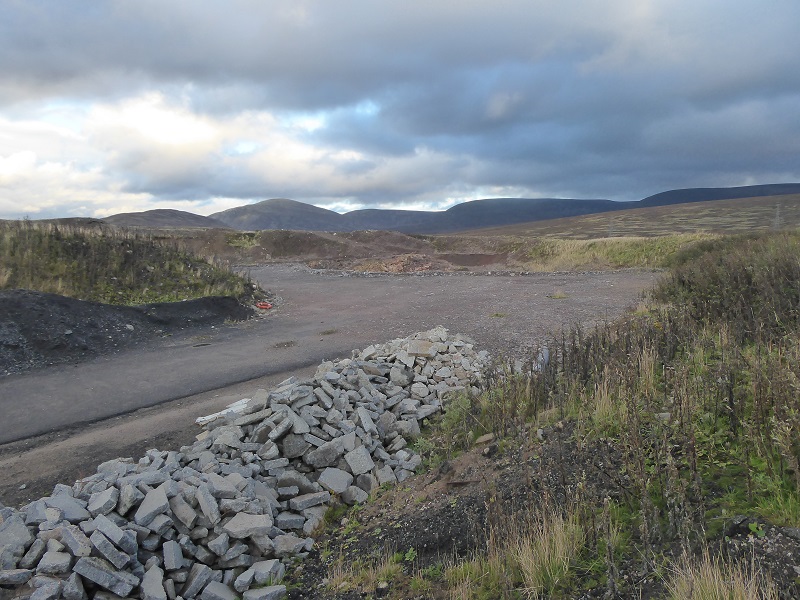
The landscape and ecological impact of the quarry
The CNPA’s Landscape Adviser’s critique (see here) is essential reading for anyone concerned about the application. Here is an extract:
The existing quarry situation is used as the baseline and the slow progressing of the quarry expansion means a gradually changing landscape but this does not lessen the fact that the duration of the development is 35 years and that it is non-reversible. Restoration of the quarry void and extracted faces does not start until the end of that 35 year period. In these assessments the duration element of the magnitude of impact has been severely underplayed. There is insufficient information (on bund structure, soils structure and chemistry and drainage) in the application to support the assumption that revegetated bunds will appear the same as the surrounding undisturbed vegetation. In fact the soils across the site are thin. These factors in my view result in the magnitude of the change being down-played.
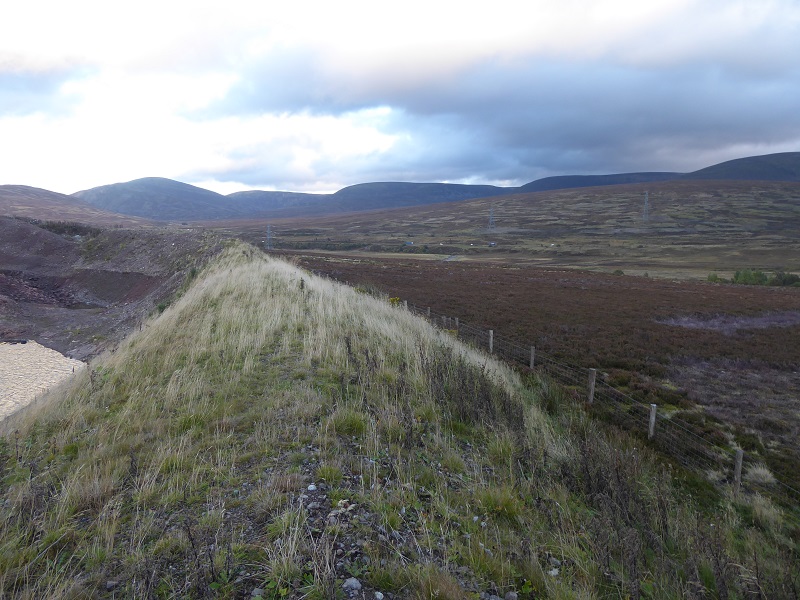
In the new planning application Leiths are proposing to reduce the height of the existing bunds, which stick up above the moorland, and to plant them with heather so they match the vegetation on the surrounding moorland.
The Landscape Adviser is rightly sceptical and concludes:
The assessment of sensitivity is flawed and magnitude under-played, this undermines the conclusions on the assessment of landscape impact significance.
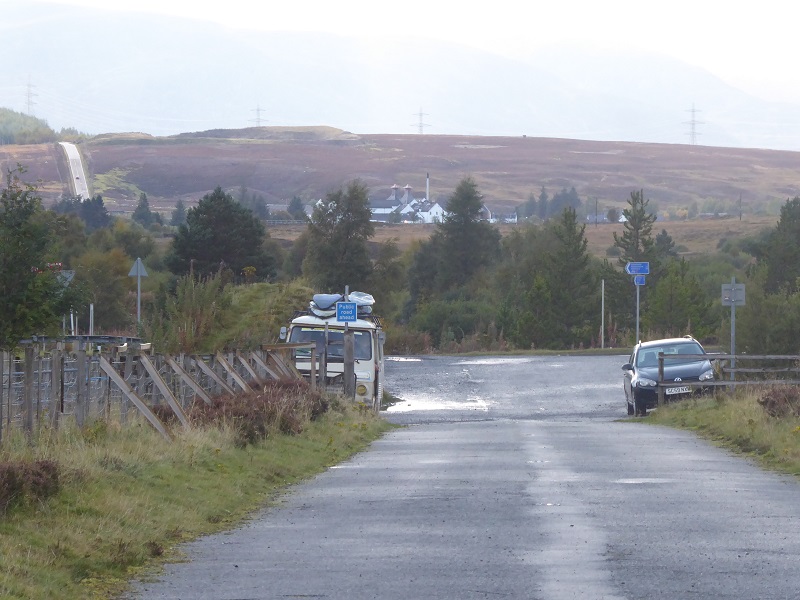
The Ecology Adviser’s report is similarly hard hitting:
The proposal is to recommence extraction at the quarry and extend it out to a total area of 15.1ha. This will result in the permanent loss of 12.8ha of dry heath/acid grassland mosaic which initial vegetation surveys (phase 1 habitat survey) indicates is of poor quality due to management for grouse.
These proposals provide only minimal gain to local biodiversity, essentially creating a larger version of the habitats the existing quarry provides which current surveys indicate is of relatively low ecological value (given restoration and a longer period of time this could improve).
This could be summarised as a trashed area of grouse moor is to be replaced by a worthless hole in the ground (the developer’s suggestion that the quarry will form a valuable wetland habitat in 35 years time is effectively demolished).
These robust comments from CNPA staff are, I believe, very welcome and demonstrate a wider problem with the application. Despite 73 documents being submitted on the planning portal they lack detail of what is actually being proposed: indeed the Scottish Environmental Protection Agency has objected to the application because of this.
All the deficiencies, however, leave open the question of whether a smaller quarry extension if properly restored, might be the best solution for the A9 dualling project. Is there a better location?
Wider planning issues – the proposed quarry and Dalwhinnie
Dalwhinnie is probably the most blighted settlement in the Cairngorms National Park.
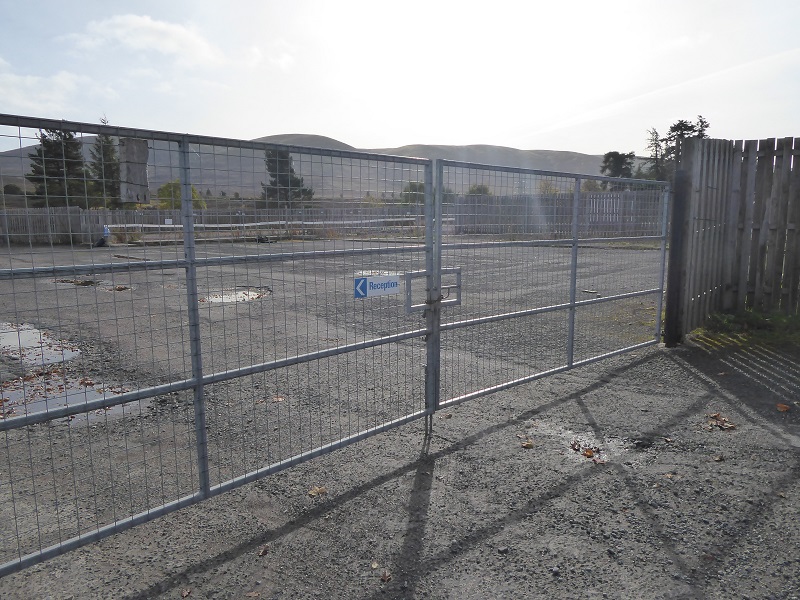

Its not a place where many visitors to the National Park choose to go at present – apart from visiting the attractive distillery – and its tourist potential is far from being realised. I suspect that a significant part of the explanation for this comes down to land ownership.
Both the village of Dalwhinnie and the proposed quarry fall within the North Drumochter estate. Leiths has signed a lease for mineral extraction with Alasdair Findlay who appears to own the North Drumochter and Ralia estates with his brother. So, its the same private landowner who, according to the ecology report, has been responsible for the grouse moor being of such low ecological value who is now going to benefit financially if the planning application is to be approved.
What the village would get out of the proposed development is unclear. Just ten people attended the local consultation event last year and, according to the report of that event , the main concern expressed was about 2 HGVs an hour driving through the village to the A9. Leiths proposed then separate access from the quarry to the A9 but this has not been included as part of the planning proposal.
While the current CNPA development plan sets out a plan for the village, this is far from being achieved and was very restricted in its ambition. Here is an extract:
25.4 All new development will, where appropriate:
consolidate the existing settlement;
maximise use of existing local services and infrastructure;
ensure the wild and exposed nature of the surrounding landscape and its valuable habitats is not be compromised;
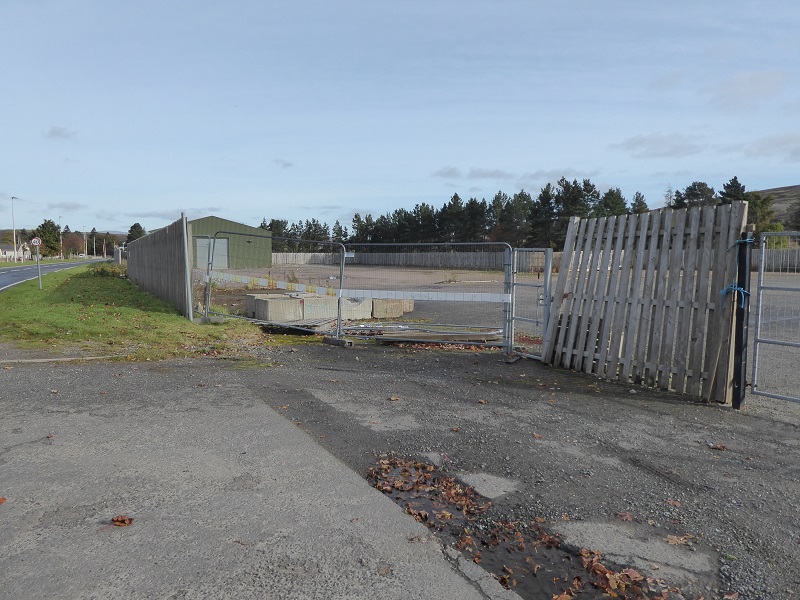 Despite all the space in the village, space for just 12 new housing units were identified in the current development plan. One wonders why? What about creating new high quality tourist accommodation which might relieve some of the pressure for housing on Speyside, support local jobs and – on a temporary basis – provide some quality accommodation for people working on the A9 (instead of the workforce having to undertake long commutes or live in caravans for months on end)?
Despite all the space in the village, space for just 12 new housing units were identified in the current development plan. One wonders why? What about creating new high quality tourist accommodation which might relieve some of the pressure for housing on Speyside, support local jobs and – on a temporary basis – provide some quality accommodation for people working on the A9 (instead of the workforce having to undertake long commutes or live in caravans for months on end)?
The way forward
The underlying problems posed for the CNPA at Dalwhinnie are the result of serious deficiencies in our planning system. The Scottish Government on the one hand authorises national developments – a centralised approach to planning – but on the other leaves the details of how these will be implemented to the market. So, they approve the A9 dualling without planning for where the materials may be sourced from – sustainable use of resources – or where the workforce will be housed – social development. A proper integrated planning system would look at all these issues and their implication for land-use.
If the CNPA does come to the conclusion that it has no option but to allow a smaller extension to the Dalwhinnie quarry to go ahead, it should use every power available to it ensure both the landowner and the developer sign up to contributing towards a sustainable development plan for the village.
If you want to comment on the application you can do so here.
Yes, Nick, your article on the proposed Dalwhinnie quarry extension has highlighted just a few of the major weaknesses in our broken Scottish Planning system. I see too many planning applications being submitted these days which are clearly lacking in detail and often contain conflicting information within the supporting documents. Planning Authorities, even National Park planning authorities, don’t seem to have enough power to reject applications at the time of receipt, even when they are patently lacking in detail, contain erroneous information or lack the justification for the development. More appropriate vetting at this early stage would save a considerable amount of effort and time by statutory consultees and objectors from the public. I can think of one planning application within the CNPA area which took four iterations of document revisions before it went to committee. The required changes were fairly obvious and it appeared that the applicant was just ‘trying it on’.
The other important issue that I have come across particularly within CNPA is the deplorable lack of enforcement of planning conditions. It’s very obvious from your photos that little or no restoration has been undertaken of the existing closed quarry. This is should not be permitted to happen anywhere, far less within a National Park. CNPA should insist that it will not even consider this application for a quarry extension until fully financed (by a bond) plans to restore the existing quarry are submitted and work started on the restoration of the existing ‘hole’. There are examples all over Scotland of restoration and landscaping works, conditioned as part of planning applications, not going ahead because the applicant went into liquidation with no bond or bank guarantee in place. This could easily happen at Dalwhinnie.